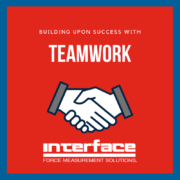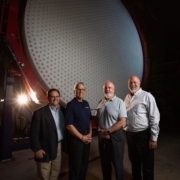Mining for Rare Earths and Minerals Using Load Cells and Torque Transducers
 The mining industry is on the cusp of a significant transformation. Driven by the demand for clean energy minerals like lithium and cobalt, extraction rates need to accelerate. However, this surge in natural resource production shouldn’t come at the expense of worker safety or equipment reliability.
The mining industry is on the cusp of a significant transformation. Driven by the demand for clean energy minerals like lithium and cobalt, extraction rates need to accelerate. However, this surge in natural resource production shouldn’t come at the expense of worker safety or equipment reliability.
Interface load cells and torque transducers are innovative sensor technologies that can address these challenges and empower the mining sector to achieve its goals, in increasing safety and efficiency in operations.
Five Reasons Sensor Technologies Are Growing in Use for Mineral and Rare Earths Mining
#1 – The mining industry requires a rapid increase in critical mineral extraction to meet clean energy demands.
#2 – Load cells and torque transducers provide real-time data on forces and torque acting on mining equipment.
#3 – This data improves safety by preventing equipment overload and enabling real-time safety alerts.
#4 – It also optimizes efficiency by reducing wear and tear, extending equipment lifespan, and informing design improvements.
#5 Sensors are used throughout mining operations, from excavators and conveyor belts to the design and testing phases of lifts and boring equipment.
How is the Mining Industry Benefitting from the Adoption of More Sensor Technologies?
Interface’s Ted Larson, VP of Product Development, recently shared critical industry insights with Global Mining Review that reflect the changing environment and advancements in the Mining Industry. “These minerals are being heavily consumed in the development of clean energy tech, including electric vehicles, battery storage systems, and low-emission power sources. The opportunities and applications for these minerals are vast, but the challenge lies in accelerating extraction to meet the demands of clean energy. A 2023 IEA report predicts a staggering increase in demand by 2030, with critical mineral needs projected to grow over three and a half times – reaching over 30 million tons within the next six years. This urgent scramble to ramp up production, unfortunately, coincides with an increased risk of safety hazards in mining operations.” Read the complete article here.
Safety Through Real-Time Monitoring
Mining operations are inherently risky. Integrating load cells and torque transducers into machinery allows for continuous monitoring of critical components. This enables:
- Real-time overload protection: Sensors can trigger alerts when equipment is nearing capacity, preventing catastrophic failures and safeguarding workers.
- Improved decision-making: Operators gain valuable insights into equipment health, allowing them to make informed choices about operation and maintenance.
Efficiency Gains from Precise Data
The data collected by these sensors goes beyond safety. It empowers mining companies to:
- Optimize equipment usage: By understanding the forces acting on equipment during various tasks, companies can optimize digging, lifting, and structural support, minimizing wear and tear.
- Reduce downtime and maintenance costs: Early detection of potential issues allows for preventive maintenance, reducing costly equipment failures and downtime. Sensors create alarm systems based on force, torque, and weight measurements.
- Inform design improvements: Engineers can leverage sensor data to design future heavy machinery and mining tools for generations with optimal strength and efficiency.
Finding Use Cases Across Mining Operations
Load cells and torque transducers have diverse applications across mining:
- Design and Testing: Measure forces on equipment components during the design phase, leading to more efficient and powerful machinery.
- Performance Testing: Accurately assess critical excavator parameters like digging force and swing torque to ensure efficient operation and worker safety.
- Continuous Monitoring: Integrate sensors into various equipment, such as excavators, conveyors, and drilling machines, for real-time monitoring of load and torque.
In a recent article in EE Times, Ted again highlights the changing landscape in the search for critical minerals and the move integrating load cells and torque transducers into equipment, tools, and heavy machinery. “Sensors are integral to ensuring the safety of mining operations, including underground, open surface, placer, dredging, high wall, mountaintop, and in-situ. The global push for critical minerals depends on force- and torque-measurement devices to improve core metal extraction and processing efficiently and safely. Mining operations worldwide rely on cranes, lifting equipment, and heavy-duty vehicles to meet material handling and supply requirements. This equipment requires rigorous testing of every component and continuous monitoring to safeguard the equipment and, more importantly, operators. These devices include load cells, torque transducers, and multi-axis sensors to provide accurate data while in use.” Read the full EE Times article here.
By adopting load cells and torque transducers, the mining industry can embrace the clean energy revolution while prioritizing safety and efficiency. These sensor technologies provide the real-time data needed to optimize operations, safeguard workers, and propel the industry toward a sustainable future.
Mining_InfographicPoster







